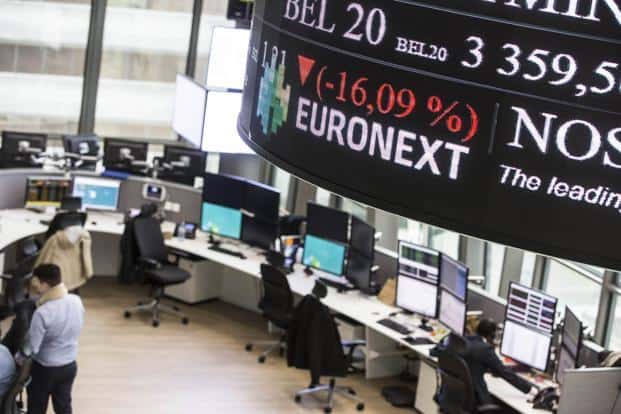
Americans have been fed up with an economy that many feel isn’t working for them, and the 2024 election may turn out to be a referendum on that gloomy sentiment. But the winds may be changing a bit: 401(k) plans are on fire. Consumer sentiment is surging. Gas prices have fallen. The country’s economic vibes are finally vibing again.
The years-long economic funk was largely driven by the unforgiving pain of high inflation. A tough housing market and exorbitant child care costs continue to bedevil budgets, but the inflation pendulum is finally swinging in the other direction.
Inflation is down substantially from its four-decade peak in the summer of 2022. A powerful US stock rally is now back on track, mortgage rates have eased a bit in recent weeks and the job market remains in great shape, with unemployment near historic lows.
None of this guarantees the good times will continue, of course. Conflicts abroad could push up prices for oil and other consumer goods, for example. And it’s important to keep the good news in perspective: Stocks are basically right where they were two years ago, and consumer sentiment hasn’t recovered from the pandemic.
But consumer surveys have begun to capture a shifting, more upbeat sentiment among Americans. Here are three reasons to be happy about the current state of the US economy. (At least for now.)
Your 401(k)
After a rough start to the month, the US stock market rallied powerfully last week, thanks to Big Tech stocks. The benchmark S&P 500 rose to notch another new record-high close on Tuesday, as the Dow Jones Industrial Average topped 38,000 for the first time on Monday before slipping on Tuesday. The tech-heavy Nasdaq Composite also gained ground Tuesday. All three indices are up over the month.
If you haven’t peeked at your 401(k) this past week, you’re in for a sweet surprise.
A surging stock market bodes well for Americans’ retirement accounts, and if stocks can cling to their recent gains, that could be a good omen for the rest of the year.
Investors are watching closely to see if economic growth, inflation and the job market continue to slow in an orderly manner throughout the year. Some observers have grown increasingly optimistic of a so-called “soft landing,” which is a rare instance in which inflation reaches the Federal Reserve’s 2% target without a spike in unemployment.
Others aren’t convinced it’s in the bag just yet.
“As we begin 2024, I’m hearing the soft landing narrative be questioned. And I think we’re right to question it,” Anna Rathbun, chief investment officer at CBIZ Investment Advisory Services, told CNN previously.
“I think it was way too early in 2023 to call any kind of victory to the hiking cycle because, frankly, the rate hikes haven’t really made their way through the mainstream economy, so this is still a wait-and-see, and there’s a lot more skepticism coming out right now,” she said.
A soft landing would likelycause stocks to surge; whereas a hard landing, or a rapidly weakening economy, would spell deep trouble for markets.
Clearly, the stakes are high for both the Fed and those Americans who have a 401(k), but for now, the stocks known as the Magnificent Seven — Alphabet, Amazon, Apple, Meta, Microsoft, Nvidia and Tesla — are the rising tide lifting all boats.
Better moods
The University of Michigan’s latest consumer survey showed that sentiment rose in the first half of January to its highest level since July 2021, after surging 29% over the past two months.
A lot of that improvement had to do with inflation steadily cooling, especially gas prices. The national average price for a gallon of gasoline stood at $3.09 Wednesday, according to AAA, down from $3.45 a gallon a year ago. Consumers’ perception of inflation is heavily influenced by gas prices, which isn’t a surprise since they dot the sky in big bold letters on every corner where drivers pump gas.
Generally, better moods should bode well for the US economy because it means Americans are feeling good enough to spend, and consumer spending accounts for about two-thirds of economic output.
The correlation between sentiment and spending isn’t perfect, according to economists, but it may boost perceptions of President Joe Biden’s handling of the economy with the 2024 primary elections in full swing.
“The power of those surveys in predicting consumer spending has been limited at best over recent quarters,” James McCann, deputy chief economist at abrdn, told CNN. “But it obviously has some political implications for the Biden camp because it could be an indicator that low approval in the polls may start to reverse.”
Consumer sentiment remains below pre-pandemic levels.
A slowly improving US housing market
America’s housing market is still tough, but there are some subtle signs of improvement.
Mortgage rates fell last week to the their lowest level since May 2023, with the 30-year fixed-rate mortgage averaging 6.60% in the week ending January 18, down from 6.66% the previous week. Rates peaked at 7.79% last year, so they’re already down more than a full percentage point.
That’s welcome news for buyers because it means affordability is slowly improving.
Meanwhile, sentiment among US homebuilders has also improved as mortgage rates ease. Builder confidence surged in January, according to the latest National Association of Home Builders/Wells Fargo Housing Market Index, climbing 7 points to a reading of 44.
That could be a sign that more housing stock is in the cards for this year, which could improve affordability even more, especially if mortgage rates continue to fall.
“Single-family starts are expected to grow in 2024, adding much needed inventory to the market,” Alicia Huey, NAHB Chairman, said in a release. “However, builders will face growing challenges with building material cost and availability, as well as lot supply.”
The Fed doesn’t directly set mortgage rates, but its actions do influence them, and the central bank has signaled that it intends to cut interest rates sometime this year.
It’s unclear when the Fed will begin to cut rates, and how many cuts there will ultimately be this year, but rate cuts in general mean even lower mortgage rates, further improving affordability.
























